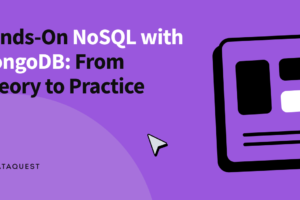
Interactivity, Accessibility, Standards: The Triple Threat Your Content Authoring Platform Must Master
The US education system evolved dramatically in the first six months of 2025. Shrinking budgets and intensifying oversight now define the new K-12 federal model. Nearly 400,000 classrooms lack adequately qualified teachers. Against this backdrop, K-12 digital education providers have the responsibility to ensure that quality education is delivered accessibly, appropriately engaging learners, and meeting state and global learning standards.
For instance, Texas’s TEA recently updated procurement guidelines to prioritize accessibility and standards mapping in all digital curriculum contracts. This is game-changing and redefines who wins adoption. Obviously, content authoring platforms equipped to meet these requirements and provide evidence of doing so have a competitive advantage.
Winning district adoptions is no longer about impressive content for K-12 digital curriculum creators. It is a strategic imperative to address the demands of decision makers across the American learning landscape. Policymakers are looking for ways to deliver greater value, secure student privacy, and lower the burden on teachers. K-12 publishers must redefine their market strategy as the pressure from districts, educators, and policymakers increases. You must turn your content authoring platform into a differentiator, instead of using it as a mere distribution tool.
Interactivity: From Static PDFs to Engaging Learning
Mere conversion of print textbooks into static digital PDFs creates an engagement gap in digital content. The learning ecosystem today expects actively engaging experiences. This means interactive learning journeys.
Key Features of an Interactive Content Authoring Platform
- Drag-and-drop activities
- Enriched eBooks
- Embedded audio/video
- Gamified experiences
- Tailored assessments
- Multi-format questions
In addition to enhancing the content’s appeal and learning experiences, these features are proven to support deeper learning and reduce dropout rates. Research shows that interactive learning platforms improve motivation by 23%, engagement by 35%, and retention by 31%, compared to passive formats. But K-12 digital curriculum developers need powerful features to ensure high-quality interactive content creation.
Accessibility: More Than a Checklist, It’s a Market Mandate
The latest US regulations mandate that all public digital content meet the WCAG 2.1 AA standards by April 2026. This means districts are under pressure to disqualify any vendor who doesn’t provide accessibility-compliant digital learning content. A best-in-class edtech content authoring tool embeds accessibility across content formats and user journeys.
Accessibility Features to look for:
- Text/Speech prompts
- A/V Captions
- Keyboard navigation
- Multi-device compatibility
- Automated compliance checks
Inclusive design, therefore, is no longer optional. It is a prerequisite for district adoptions. The right content authoring platform ensures that all students can easily access quality education, while reducing the legal risks associated with exclusion penalties. Accessibility benefits teachers as well. Course authoring platforms with multilingual support, on-demand transcripts, and cultural alignment capabilities allow teachers to contextually tailor content. This aligns with accessibility and inclusivity requirements.
Take MagicBox’s AI-Powered Course and Assessment Authoring Platform for instance. It leverages AI-powered tools to streamline content creation, uphold content quality, and boost efficiency. Plus, it is highly customizable, easy-to-use, and extremely efficient. It is a scalable course authoring solution that helps you deliver accessible learning content aligned with the K-12 digital curriculum and standards of your target market.
Standards Alignment: The Silent Deal-Breaker
Great content often gets rejected because it doesn’t map to district or state standards. Without streamlined tagging and metadata management, publishers risk losing bids before their content is even reviewed. Compliant edtech content tools can help you demonstrate accountability to curriculum goals.
Compliance Alignments to Look For in a Content Authoring Platform
- Data privacy laws
- Accessibility regulations
- Cybersecurity requirements
- Interoperability standards
- Transparency mandates
The CASE 1.1 standard of 1EdTech streamlines resource tagging, grading, reporting, and credential mapping to the institute’s official academic standards, competencies, and skills. Tools with real-time updates in CASE-aligned online curriculum authoring software reduces the time needed to roll out content revisions after a standards update from weeks to hours. This flexibility makes your offering agile and future-ready. Learn more in our detailed blog on Why Publishers Could Be Losing District Deals Because of Education Compliance Gaps. Plus, compliance-aligned digital content creation tools drive operational efficiency, scalability, and easier district adoptions.
Are You Ready to Level Up?
In today’s education market, content alone isn’t enough. Publishers must embed compliance, interactivity, and standards alignment into the DNA of their offerings. Mastering the trifecta of interactivity, accessibility, and compliance leads to increased district adoptions, improved learner outcomes, and long-term relevance for K-12 digital content authoring platforms.
The next RFP could be won or lost based on how well your platform demonstrates its ability to deliver on these three pillars. Now is the time to audit your tools, processes, and partnerships. Get a personalized audit from the experts behind the award-winning MagicBox platform. Experience the Magic touch to drive wider adoptions and greater learning impact with standards-aligned, accessible, and interactive educational content.
Source link




